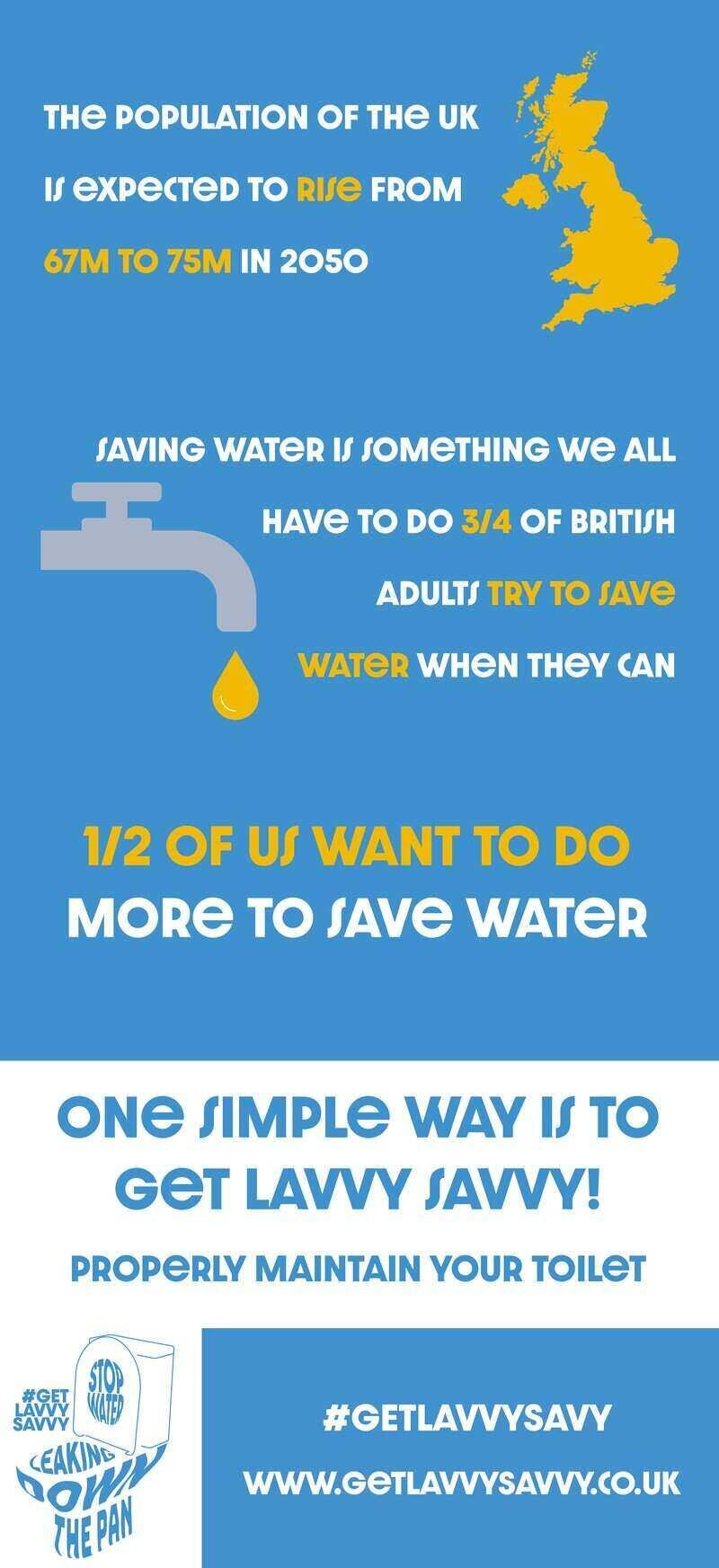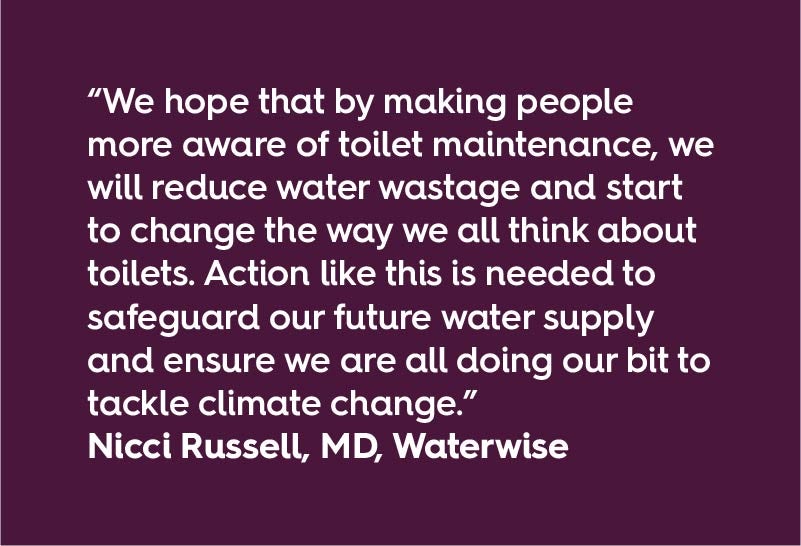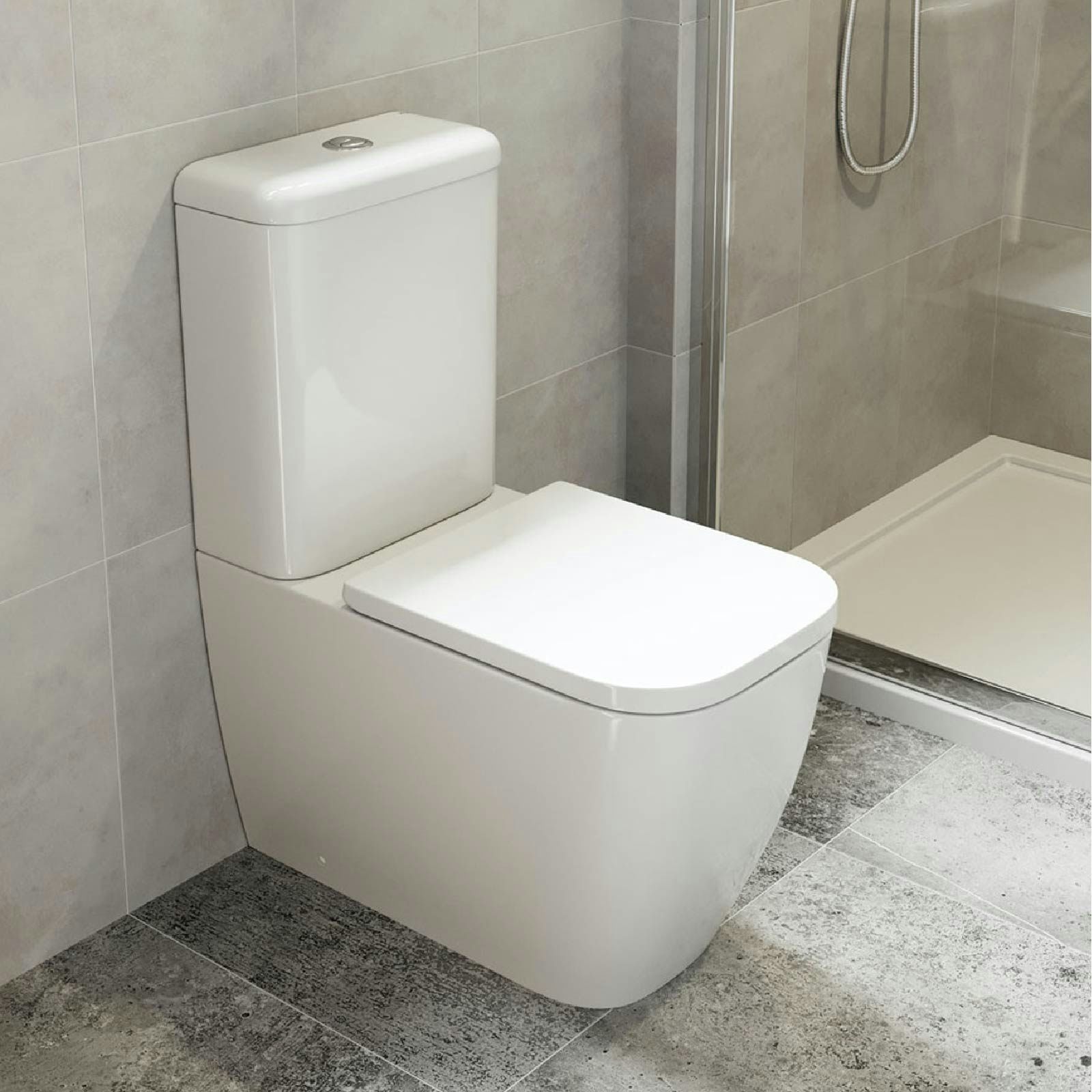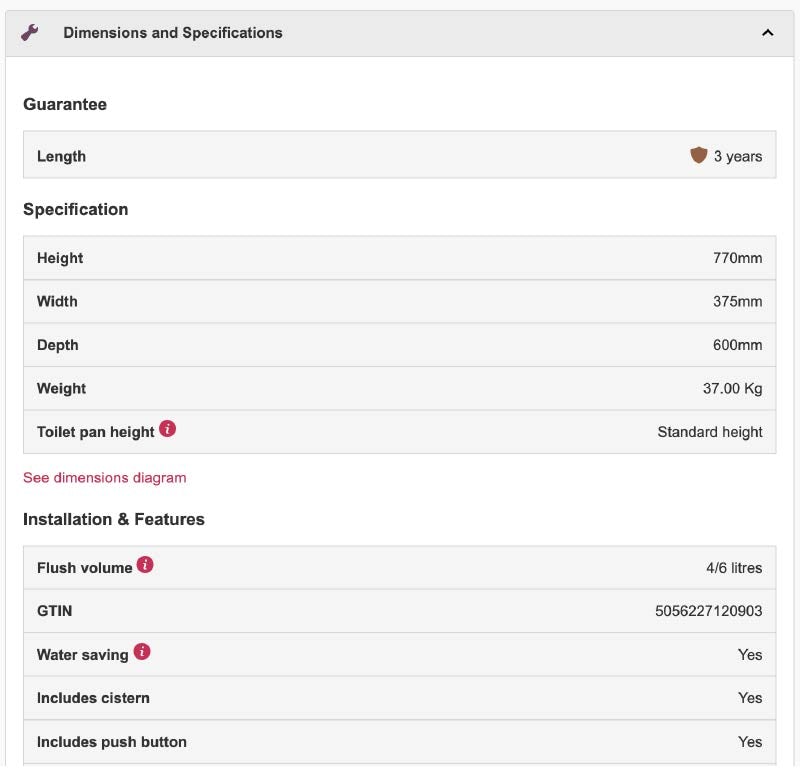Did you know you may be wasting hundreds of litres of water without even knowing it? It’s time to get lavvy savvy, as we show you how to spot the tell-tale signs of a leaky loo.
Water is an increasingly scarce resource throughout the world and, even with our rainy climate, the UK isn’t immune to water shortages.
Leaky appliances are a major issue when it comes to wasting water in the home, with the humble toilet often being the worst culprit. In fact, it is estimated that 1 out of every 25 toilets in the UK has a faulty cistern which constantly runs, wasting hundreds of litres every single day. Yet, it’s an issue which can be easily addressed.
We’ve teamed up with the Bathroom Manufacturer’s Association (BMA) to give you some top tips on keeping your toilet in tip-top condition. Read on, as we show you how to check for (and fix) leaks, how to maintain your toilet and how to continue saving water.
Why is it important to save water?
Believe it or not, but even in here the UK, where it seems to rain more often than not, we do face water shortages, especially when we experience unusually long, dry spells of weather.
With nearly 3 quarters of a million homes being built in the UK each year, our demand for water will only get greater. And that includes ensuring we have enough for farming, industry, leisure and the rest of our natural environment.

There are many things you can do to save water around your home, from turning the tap off when you brush your teeth to collecting rain in a water butt to use on your plants. However, it's the bathroom where we use the most water. So, it certainly pays to look out for eco-friendly bathroom products.

Next, we’ll show you how to check for a leaky loo, what you can do to keep your toilet in good working condition and how you can save water in other ways.
Get lavvy savvy with these 10 top tips
Tip 1: Much like with testing your smoke detectors, you should give your toilet a quick once-over and check for internal leaks. It’s easy to do and this video will show you exactly how to do it.

Tip 2: Inspect your cistern and make sure the interior seals are free from limescale and gunk. This will help prevent leaks and only needs to be done once in a while. This video below will show you how to do this.
Tip 3: If you do find that your cistern is constantly running, you can attempt to fix it (see the video below). If it is quite old, it is certainly worth considering buying a new toilet.
Tip 4: Make sure the only things that go down your toilet are the usual bodily waste (wee and poo) and toilet paper. By putting other items down your toilet, you risk causing blockages and needing extra flushes. When it comes to other bathroom items: “bag it and bin it”. A small bathroom bin costs next to nothing and will discourage other bathroom users from discarding unsuitable items in the toilet.
Tip 5: Coloured cleaning blocks may seem like a good idea, but when used in the cistern they can cause components to corrode quicker than normal. This can lead to leaks and related issues.
Tip 6: If you have a modern water-saving dual flush toilet, make sure everyone in your household knows how to operate it effectively. Small flush for liquid. Large flush for solid matter. If you don’t know how it works, check out our guide to dual flushes or contact the manufacturer who will be happy to explain.
Most modern toilets have a small button for a short flush and a larger button for a longer flush
Tip 7: If you have a traditional style single flush, you can reduce the amount of water you use by fitting a displacement bag. These are cheap to buy and can often be ordered free of charge from your water company.
Tip 8: When buying a new toilet, keep an eye out for how much water it uses. At Victoria Plum, this is clearly labelled on each product page.
Tip 9: Don’t be tempted to put a brick or stone in your cistern in an attempt to save water. This could actually clog up the seals inside your toilet, and you could end up using even more water than before.
Tip 10: Get Lavvy Savvy—find out more about maintaining your toilet by heading to the BMA's own dedicated website.
More water-saving advice
At Victoria Plum, you’ll find plenty of expert advice on saving water in your home. If you’re experiencing issues, why not check out our toilet troubleshooting guide or find out how to unblock a toilet yourself.
For more top tips, check out our top 5 tips for saving water or take a look at our eco bathroom ideas for further inspiration.
If you haven’t done so already, why not browse our water-saving eco bathroom range, which you’ll immediately recognise when you see the “green drop” icon (pictured below).











